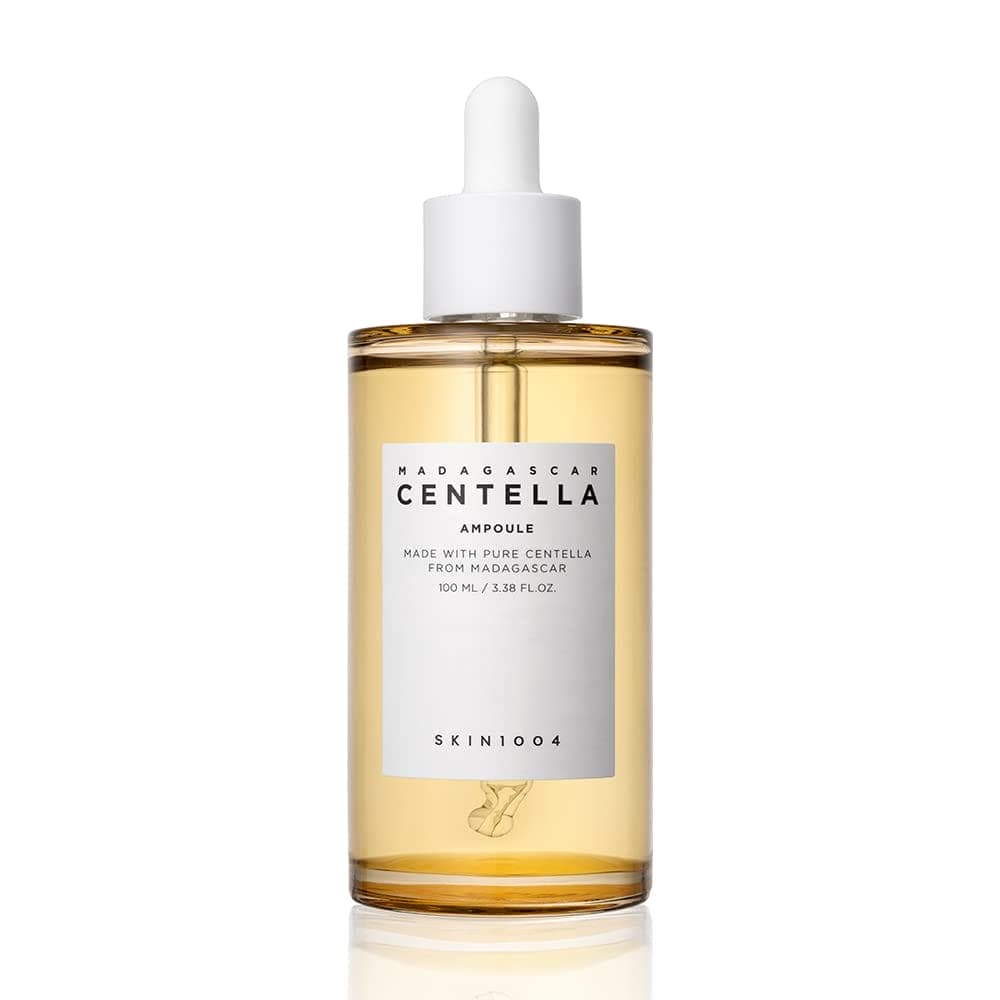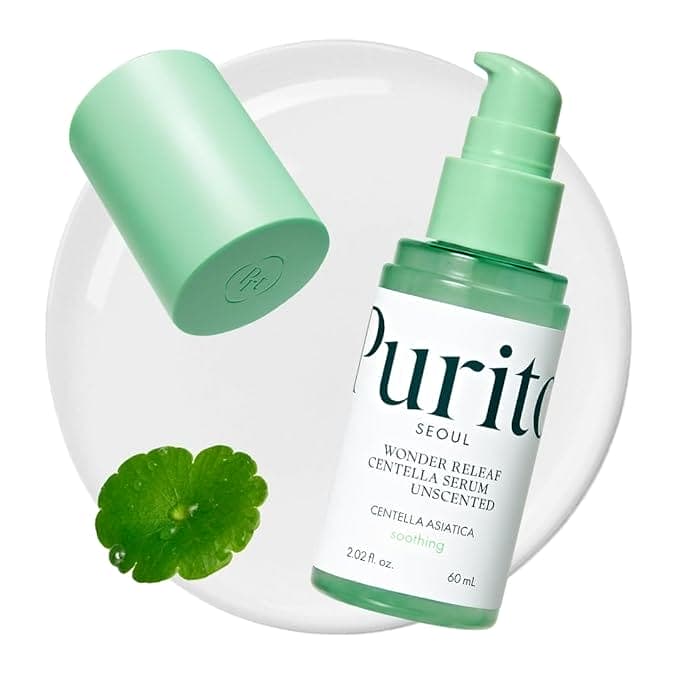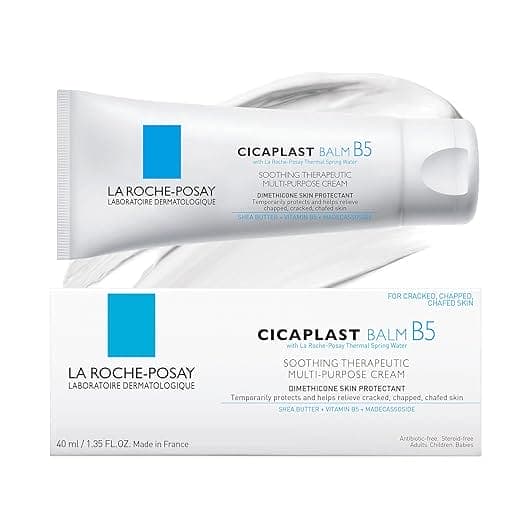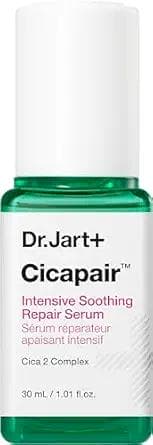Skincare, Trends & Opinions
Why Centella Serum Is the Soothing Skincare Staple Your Routine Might Be Missing
If you click on links we provide, we may receive compensation.
It’s green, it’s calming, and it’s everywhere right now – Centella asiatica, also known as Gotu Kola or “tiger grass,” is having a major skincare moment. But this is no fleeting trend. Centella has been used for centuries in traditional medicine, and its modern skincare applications are backed by solid science. Centella serum, in particular, is quickly becoming a go-to for anyone dealing with sensitivity, redness, or a compromised skin barrier.
If your skin feels inflamed, reactive, or just plain tired, a good Centella serum might be the relief you didn’t know you needed. Here’s why it works, what to look for, and who should be using it.
What Exactly Is Centella Asiatica?
Centella asiatica is a leafy green herb that grows in tropical and subtropical climates across Asia. It’s been used for thousands of years in Ayurvedic and Traditional Chinese Medicine for everything from wound healing to improving mental clarity.
In skincare, it’s prized for its ability to calm irritation, support healing, and strengthen the skin barrier. It contains a powerful mix of bioactive compounds, most notably asiaticoside, madecassoside, asiatic acid, and madecassic acid – all of which contribute to its soothing and restorative properties.
These compounds are what give Centella its reputation as an anti-inflammatory, antioxidant, and collagen-boosting botanical. When applied in a concentrated serum format, they can work wonders on compromised, sensitive, or aging skin.
What Does a Centella Serum Do?
At its core, Centella serum is a skin soother. But it does a lot more than just calm things down. Here’s what it’s known for:
1. Reduces Redness and Inflammation
If your skin flushes easily, reacts to everything, or just always looks a little red, Centella is a reliable first step. It helps tone down inflammation by suppressing pro-inflammatory signals in the skin, which is why it’s often recommended for conditions like rosacea or post-procedure care.
2. Speeds Up Wound Healing
Centella has been studied for its wound healing ability in both animal and human models. The compounds in Centella stimulate fibroblast proliferation and increase collagen synthesis—key steps in skin repair. That makes it useful not only for actual wounds but also for acne recovery, sunburn, or microtears from harsh products.
3. Strengthens the Skin Barrier
A healthy barrier means less water loss, better protection from environmental damage, and a more resilient complexion overall. Centella supports ceramide production and helps restore balance in the outermost layers of your skin. That’s why many Korean brands include it in “cica creams” designed for barrier repair.
4. Offers Antioxidant Protection
Free radicals speed up skin aging and inflammation. Centella’s active compounds act as antioxidants, neutralizing these harmful molecules before they can damage collagen and elastin. Regular use of a Centella serum may help minimize the appearance of fine lines and promote overall skin longevity.
5. Boosts Collagen
Some studies have shown that Centella can directly stimulate type I collagen production. This is especially helpful if you’re concerned about aging skin, loss of elasticity, or post-acne scarring.
Who Should Use a Centella Serum?
Centella is generally safe and well-tolerated by most skin types, but it’s especially helpful for:
- Sensitive skin: Centella calms irritation without causing more of it.
- Acne-prone skin: It reduces redness and helps skin heal without clogging pores.
- Dry or damaged skin: It reinforces the skin barrier and improves moisture retention.
- Post-treatment skin: Ideal after peels, retinoid use, or laser treatments.
- Aging skin: Its antioxidant and collagen-boosting benefits make it great for mature skin.
What to Look for in a Centella Serum
Not all Centella serums are created equal. Here’s what to consider when shopping:
Check the concentration
Some products list Centella asiatica on the label but only include a trace amount. Look for formulas where it’s in the top five ingredients or explicitly mentions the percentage (many range from 30% to 90% Centella extract).
Look for actives like madecassoside
If the serum highlights madecassoside, asiaticoside, or other isolated compounds, that’s a good sign. These are the most studied parts of Centella with proven benefits.
Avoid irritating extras
Since Centella is often used to calm irritation, it doesn’t make sense to pair it with strong fragrances or potential allergens. Look for fragrance-free, alcohol-free formulations if you have sensitive skin.
Pair with complementary ingredients
Centella works well with other barrier-boosting or soothing ingredients like hyaluronic acid, ceramides, niacinamide, and panthenol. Avoid combining it with harsh exfoliants unless directed by a professional.
Popular Centella Serums Worth Trying
If you’re ready to try it out, here are a few well-reviewed serums that center on Centella:

1. Skin1004 Madagascar Centella Ampoule
This minimalist serum contains 100% Centella asiatica extract and is ideal for sensitive skin. It’s lightweight, non-sticky, and layers easily with other products.

2. Purito Centella Unscented Serum
Formulated with 49% Centella extract plus niacinamide and peptides, this serum is well-loved for its calming and brightening effect. And no fragrance or essential oils makes it great for reactive skin.

3. La Roche-Posay Cicaplast B5 Serum
While not a traditional Centella serum, it does contain madecassoside, one of the active components, alongside panthenol. It’s designed for post-procedure use but great for everyday barrier repair.

4. Dr. Jart+ Cicapair Serum
A cult favorite in the cica category. It combines Centella with minerals like copper, zinc, and magnesium to support healing and fight stressors. It also has a slight green tint that can neutralize redness on contact.
How to Use a Centella Serum in Your Routine
Centella serums fit into most routines easily. Apply it after cleansing and toning, but before heavier moisturizers or oils. Morning or night use is fine—or both, if your skin loves it.
If your skin is going through a rough patch, Centella can serve as your main serum while you avoid actives. It’s a great fallback during seasonal changes, skin flare-ups, or post-treatment recovery phases.
For acne-prone users, Centella serums can be paired with mild BHAs or niacinamide to calm inflammation while helping control breakouts. If you’re using retinol, Centella may help buffer irritation and keep your barrier intact.
Why Centella Serums Are Big in K-Beauty
Centella’s popularity has a lot to do with its rise in Korean skincare. Korean brands led the charge in developing “cica” creams and serums specifically for skin recovery. As K-beauty gained global traction, so did interest in this gentle powerhouse.
The term “cica” doesn’t have a strict definition, but it’s generally used for products featuring Centella as the main soothing ingredient. These formulas often include high water content, gel textures, and minimalist ingredient lists – all things that appeal to those with sensitive or acne-prone skin. K-beauty’s focus on hydration, prevention, and barrier-first skincare made Centella the perfect fit.

The Science Backing It Up
Centella isn’t just skincare folklore. There’s research behind its effectiveness. A 2012 review in the Indian Journal of Pharmaceutical Sciences highlighted Centella’s wound healing and anti-inflammatory properties. More recently, clinical trials have shown that madecassoside (a component of Centella) helps improve skin hydration, reduce redness, and protect against oxidative stress.
In one 2017 study published in Advances in Dermatology and Allergology, researchers observed significant barrier repair and reduction in transepidermal water loss after applying a madecassoside-based cream. This kind of data explains why dermatologists often recommend Centella products, especially after procedures or during skin recovery.
Can You Be Allergic to Centella?
Allergic reactions to Centella are rare, but not impossible. If you have a known sensitivity to plants in the Apiaceae family (like parsley or celery), proceed with caution.
Patch testing is always a smart move when introducing a new product – especially if your skin is already compromised. And if you notice any stinging, itching, or burning, stop use and reassess the formulation.
Is It Safe to Use Every Day?
Absolutely. In fact, Centella’s benefits compound with regular use. Because it’s not exfoliating or sensitizing, most people can safely use it twice daily. Just be mindful if you’re using multiple active products—sometimes less is more when your skin is inflamed or sensitive.
FAQs
Can I use Centella serum with retinol or acids?
Yes, but it’s best to apply Centella serum separately from strong actives. Use it afterward to help calm and support the skin, or alternate days if your skin is highly sensitive.
Does Centella serum help acne?
It can. While it won’t directly kill acne bacteria, it helps reduce inflammation and promote healing, which are key for clearer skin over time.
Is Centella better than aloe vera?
They’re both soothing, but Centella has more targeted wound-healing and barrier-repair properties. Aloe is better for hydration and cooling, while Centella goes deeper in repair.
How long before I see results?
Some people notice a calming effect within days, especially for redness. Deeper changes like barrier repair or scar improvement may take a few weeks.
Can I use it around the eyes?
Yes, but make sure the formula is approved for the eye area. Some Centella serums are gentle enough, but always check the label.
Centella serum isn’t flashy
It doesn’t tingle, peel, or give you instant glass skin. But that’s exactly why it works so well. It’s for the slow, steady recovery. For calming the chaos. For supporting your skin so it can do what it’s meant to do: protect you. In an industry full of high-stimulation ingredients, Centella is the quiet achiever. If your skin has been crying out for balance, it might just be time to answer with a drop of green.




